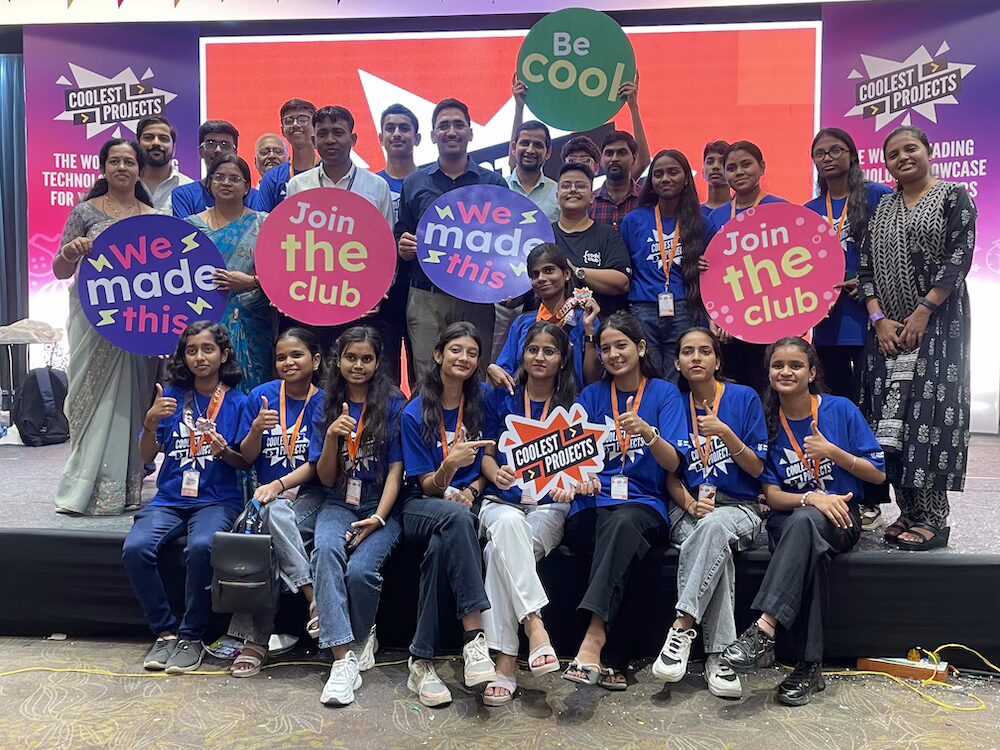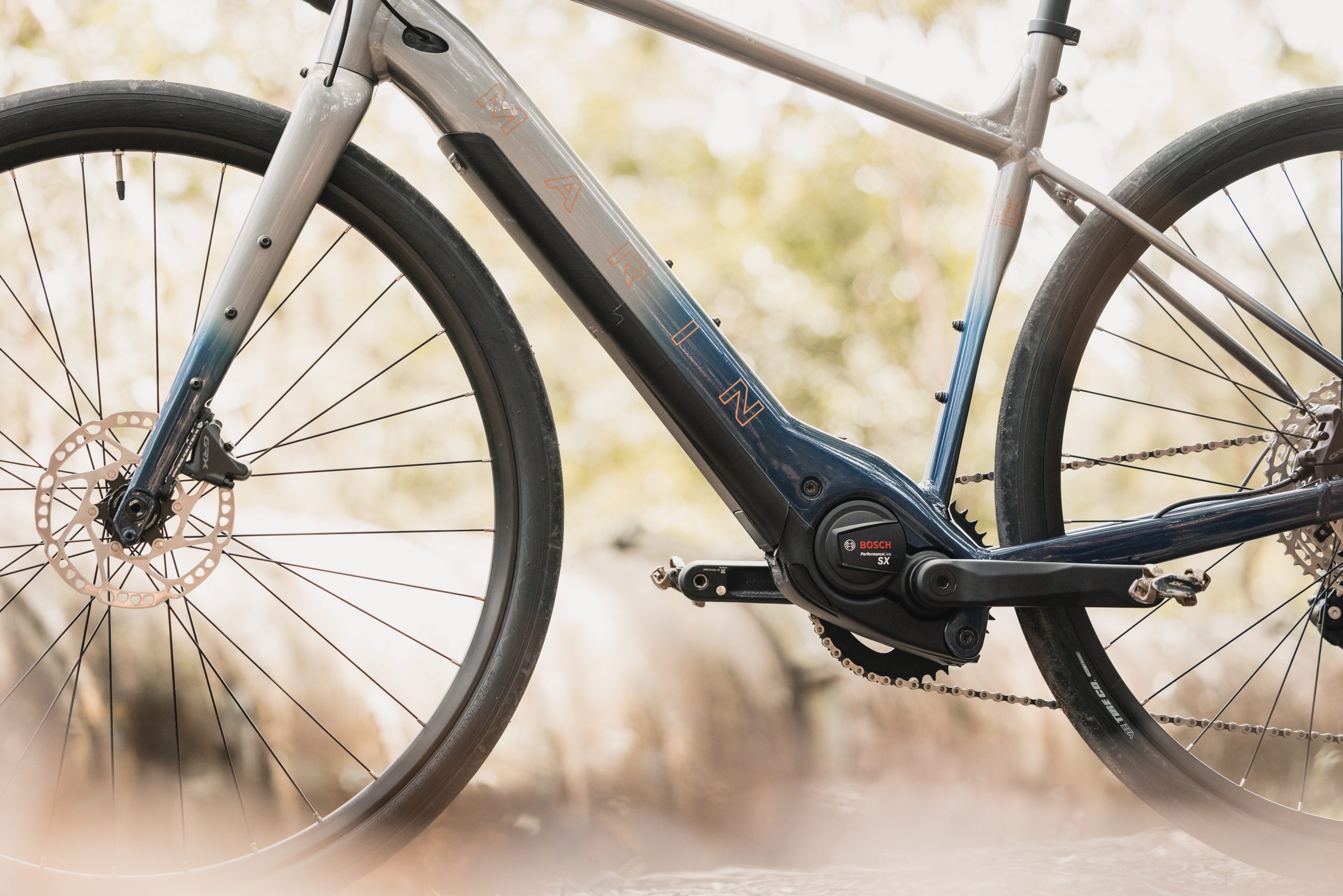Wild 0.7 released on Monday as the newest feature release for this very fast linker for Linux systems competing with Mold on x86_64 / ARM64 / RISC-V devices…
Intel’s LLM-Scaler Updated With OpenAI’s GPT-OSS Model Support
Back in August was the announcement of LLM-Scaler as part of Project Battlematrix. LLM-Scaler is a new Intel software project to provide optimized AI inference capabilities on Intel graphics hardware. A new beta release of LLM-Scaler “llm-scaler-vllm” is now available with expanded LLM model coverage…
SUSE Provides U-Boot Support For The Raspberry Pi 5
SUSE’s hardware enablement team has worked through proper U-Boot support for the Raspberry Pi 5 single board computer…
libinput 1.30-rc1 Released With Lua Plugin Support
The libinput input handling library for the Linux desktop on both Wayland and X.Org based systems is rolling out Lua plug-in support. Out today is libinput 1.30-rc1 with the initial infrastructure for supporting plug-ins written in the Lua scripting language…
Dune driving with Mercedes-Benz as it tests off-road systems
LAS VEGAS—About 100 miles from Las Vegas, at the northern end of the Mojave Desert, you’ll find a pretty large pile of sand. The Dumont Dunes formed thousands of years ago as sand from recently dried-up lakes blew in on the wind through gaps in the mountains. We’re talking real Lawrence of Arabia stuff—some dunes hundreds of feet high, and a large amount of it is run as a recreational area by the Bureau of Land Management for activities that include a bit of off-roading.
Which is why we found a trailer full of Mercedes-Benz engineers and some preproduction prototype electric GLCs at work out there. When we last saw the next GLC, it was earlier this year at a German test track, wearing one of those black-and-white digital camouflage wraps that obscure the finer details of a new design. The automaker is dealing with the finishing touches ahead of the model going into production next year. The hardware is signed off on, but there’s plenty of code to tweak and calibrations to perform, including making sure that even when the terrain gets loose, the handling won’t.
While I’m sure that the vast majority of GLC customers’ experience with rough surfaces won’t extend past the odd, particularly bad pothole, the car is being engineered to cope with much more. When fitted with the optional air suspension, the ground clearance can increase to up to 8.1 inches (206 mm) at low speed and 7.2 inches (183 mm) even up to highway speed, as long as the car is in the more extreme of the two Terrain modes. That allows for approach and departure angles as much as 21.4 degrees (approach) and 22.6 degrees (departure).
EV Sales Plummet In October After Federal Tax Credit Ends
Longtime Slashdot reader sinij shares a report from Car and Driver: Sales of electric vehicles surged in September as shoppers rushed to take advantage of the $7500 federal EV tax credit before it disappeared at the end of the month. With the government subsidies now gone, EV sales were expected to take a hit in October. While only a few automakers still report sales on a monthly basis, the results we do have do not paint a rosy picture for EVs in a post-tax credit world.
The Korean automakers were hit particularly hard by the loss of the tax credit. The Hyundai Ioniq 5, which was the fifth-best-selling EV through the third quarter of this year, experienced a 63 percent drop, moving 1642 units in October 2025, down from 4498 in 2024. Its platform-mates saw similar declines. The Kia EV6 moved just 508 units, down 71 percent versus the same month the year before, while the luxurious Genesis GV60 only found 93 buyers, a 54 percent slide year over year. Things were even worse at Honda. While the Acura ZDX was recently discontinued after just a single model year, the related Honda Prologue remains on sale but registered just 806 units, down 81 percent from 4130 sales in October 2024. […]
Obviously, this isn’t the full picture, as several major players — including General Motors, Toyota, Nissan, and Volkswagen — only release sales reports on a quarterly basis, and others, such as Tesla and Rivian, don’t break out individual sales at all. But with four of the top 10 bestselling EVs through Q3 all showing noteworthy declines in October, it spells trouble for the EV market at large. The end-of-year sales figures will provide a much clearer picture of whether October was just a blip or the start of a much more widespread problem for EV sales.
Read more of this story at Slashdot.
Celebrating young tech creators: Coolest Projects 2025 and what’s next in 2026
Coolest Projects is all about celebrating young digital creators and the brilliant things they make with technology. This year, we’ve seen just how much taking part can boost young people’s confidence, creativity, and sense of belonging. Today, we’re sharing the impact of Coolest Projects 2025 and looking ahead to what’s next for 2026.

Highlights from Coolest Projects 2025
More young people than ever took part in 2025, with 11,980 young people from 41 countries joining the Coolest Projects global online showcase, a 57% increase from last year. We also hosted a livestream celebrating all participants and announcing the judges’ favourites, which has been watched by over 2,000 people. Plus, we expanded our in-person events, including bringing Coolest Projects back to the USA and running our very first in-person event in India.
This year saw significant growth in in-person events, with a record number of young people sharing their creations face-to-face. Across the UK and Ireland, more than 200 young people showcased their projects to judges, families, and peers. Attendance at the UK event grew significantly compared to 2024, reflecting the strong enthusiasm for digital making, while the Ireland event continued to attract a dedicated community of young creators. This enthusiasm shows how much young people value being part of a creative, supportive community that helps them share ideas and develop their skills.

We were equally delighted to run Coolest Projects USA again, where young people embraced the chance to connect, share their work, and draw inspiration from one another. We also saw strong interest in the new AI category, with notable uptake at the UK and US events.
Participation by girls in the online showcase kept growing in 2025: 51% of entrants identified as female, up from 47% last year. We’re excited to build on this momentum and inspire even more girls to share their creations in 2026. We’ll continue encouraging participation by girls across all categories and broaden local promotion, especially where new in-person events are launching, to help maintain gender balance.
Online showcase: Confidence, skills, and inspiration
To understand Coolest Projects’ impact, we gathered survey and interview feedback from young creators, mentors, and event attendees across both the online showcase and in-person events.
This year’s online surveys and interviews indicate that Coolest Projects continues to be a powerful driver of confidence and skills:
- 72% of young people and 100% of mentors agreed that participating increased confidence in coding and digital making
- 89% of young people reported improved coding and digital making skills
- 83% of young people (and 100% of mentors) said they felt inspired to continue with computing and digital making after taking part
Young people and mentors told us that the online gallery plays a crucial role in sparking ideas and motivation:
“Kids definitely were excited in knowing their project might be seen by other kids around the world and displayed publicly online, so it’s truly a way for them to feel recognised. It definitely motivated them too.” – Mentor, South Africa
Coolest Projects truly offers a global setting like no other, giving young people the chance to see ideas from across the world and feel part of an inspiring international community.
In-person events: community and belonging
Creators told us how special it felt to be surrounded by peers who love making with technology. They valued sharing their projects, meeting like-minded people, and getting ideas from others:
“I think it’s really interesting seeing a lot of other children that understand programming and want to get better at it.” – Young creator, Coolest Projects USA

Survey data echoes this: 74% of young people said Coolest Projects helped them feel they belong in computing. Many also highlighted the wider skills they developed, from problem solving and creativity to communication and teamwork:
“We [my friends and I] thought it was a really great opportunity and idea to make a project that we could all work on together and it’s been really awesome getting to know these girls and working together, fixing whatever code that we made wrong, debugging, you know…. We’d come together once a week to work on this project. So, I honestly got to learn a lot from them, watching them and how they code because they’re a little more advanced than I am. But, you know, that just means I get to learn more. So, you get to learn skills and support each other. It’s been awesome…” – Young creator, Coolest Projects USA
Young people returning for another year described how they stretched themselves, from advanced Scratch techniques to experimenting with AI and robotics. They also said hands-on project work is better than passive learning every time.
“…It’s the journey on which I go through to create the robot. And through that journey, I seem to learn much more than say if I were to watch a YouTube video and not do anything practical with it. I learn much more if I physically get hands-on with robotics encoding.” – Young creator, Coolest Projects UK
Alongside the projects on show, young people loved the interactive activities at events (with shout outs for VR and our escape room in the UK), and appreciated the friendly, approachable judges and smooth event setup. A new group registration system also made it much easier for mentors to enter multiple projects.
Dates for Coolest Projects 2026
We’re thrilled that so many young people around the world took part this year, and we can’t wait to welcome even more creators in 2026.
“Make it [the event] bigger so more people can come.” – Young creator, Coolest Projects USA
The Coolest Projects online showcase is open to any young person up to age 18, anywhere in the world. Registration will open on 14 January 2026. We’ll host a celebratory livestream on 24 June 2026.
Coolest Projects in-person events will also be popping up around the world. In-person events are open to everyone up to age 18 in the host country. Family and friends are very welcome to come along too.
Save the date for:
- Coolest Projects Belgium, 14 March
- Coolest Projects Japan, 28 March
- Coolest Projects USA Minnesota, 11 April
- Coolest Projects USA Georgia, 2 May
- Coolest Projects UK, 16 May
- Coolest Projects Sudan (held in Egypt), 12 August
- Coolest Projects Nigeria, 29 August
More dates coming soon for:
- Coolest Projects Canada
- Coolest Projects India
- Coolest Projects Indonesia
- Coolest Projects Ireland
- Coolest Projects Malaysia
- Coolest Projects South Africa
- Coolest Projects Sri Lanka
Want to be first to know when more dates are confirmed? Sign up to our newsletter and keep an eye on the Coolest Projects website for announcements.
Get involved
It’s never too early to start making and saving your digital projects for next year’s showcase. Whether you’re into AI, games, web, hardware, or Scratch, there’s a place for your ideas at Coolest Projects.
Start by:
- Checking out the judges’ favourites in the online gallery to spark ideas
- Starting a project with a friend, your family, or a club, and sharing your progress
We can’t wait to see what the world’s young tech creators will make next!
The post Celebrating young tech creators: Coolest Projects 2025 and what’s next in 2026 appeared first on Raspberry Pi Foundation.
Systemd-Free Devuan GNU/Linux 6.0 Distro Is Out Based on Debian 13 “Trixie”
The Devuan developers announced the release of Devuan GNU/Linux 6.0 “Daedalus” distribution as a 100% derivative of the Debian GNU/Linux operating system without systemd and related components.
Marin Lombard is reborn as a value-packed e-gravel bike that “laughs at terrain changes”
The Marin Lombard E is no longer a commuter bike for city slickers, instead a do-it-all electrically assisted rig built to tackle urban streets, dirt roads and the occasional cheeky path into the woods.
The Lombard has morphed from a commuter bike into an electric gravel bike, equipped with a 400Wh battery and Bosch’s SX motor, along with wide gravel tyre clearances and relaxed geometry, to boost its utility beyond the 9-to-5.
The Lombard E comes in two models, with one enjoying a more tarmac-focused build and the other with an eye on more challenging terrain.
Both represent great value for money, as has been the case with Marin’s recent bikes.
- Marin Lombard E1 review: my partner and I both loved it – for different reasons
- Best electric gravel bikes: 9 gravel ebikes rated and reviewed
Go anywhere, do anything?

Marin says the Lombard E is “a multi-surface drop bar dream machine that laughs at terrain changes”, which gives us a taste of what the brand believes the two bikes can do.
Both bikes have room for wide 50c tubeless tyres to help smooth the way, and a geometry that’s relaxed rather than racy.
Combined, this should result in a ride that’s suitable for a huge range of applications, boosted by both frame and fork luggage-carrying mounts.
Both models are based around the same Series 4 Beyond Road alloy frame, which has a dropped top tube for improved standover height and skinny stays to add an element of compliance to the frame.
There’s a pair of bottle bosses, while the Universal Derailleur Hanger provides plenty of drivetrain future-proofing.
At the front, a carbon fork is used on both models to help take the sting out of the trail.
| Size | S | M | L | XL |
|---|---|---|---|---|
| Reach (mm) | 385 | 405 | 415 | 425 |
| Stack (mm) | 565 | 583 | 607 | 640 |
| Head tube angle (degrees) | 70 | 70 | 70 | 70 |
| Seat tube angle (degrees) | 73.5 | 73.5 | 73.5 | 73.5 |
| Seat tube length (mm) | 460 | 485 | 505 | 530 |
| BB height (mm) | 282 | 282 | 282 | 282 |
| Wheelbase (mm) | 1042 | 1069 | 1088 | 1110 |
| Chainstay (mm) | 435 | 435 | 435 | 435 |
| Top tube (mm) | 552 | 578 | 595 | 615 |
| Standover (mm) | 687 | 702 | 715 | 742 |
Power up

The Bosch SX Sprint ebike motor is powered via a 400Wh battery in the down tube. A Fidlock locking mechanism secures the cover on the underside of the down tube, from which the battery can be dropped for charging in the house if required.
The top tube holds the basic Bosch System Controller, with five bars denoting battery levels and coloured LEDs showing which of the four ride modes is engaged.
A simple switch on the bar enables easy toggling between modes.

The Bosch Performance SX motor offers 60Nm of torque with 600W of maximum power and up to 400% assistance – it can give out up to four times the power that you apply via the cranks.
The included Sprint mode is targeted at e-gravel riders, offering a more dynamic feel to its power delivery. It gives up to 280% assistance and is built for steep climbs and fast sprints.
Choose your ride

Two models are available, the Lombard E1 and the Lombard E2.
The Lombard E1 is the base model, coming with slicker file-treaded tyres and designed for a more urban audience.
The Series 4 aluminium frame is fronted by the carbon fork, while Shimano provides both the GRX-level 12-speed 1x drivetrain and hydraulic brakes.
The Lombard E1 is priced at £3,399 / $4,299 / €3,899 / CAD$4,999

The Marin Lombard E2 is built for the more adventurous rider.
The Vee Tire Co Quickstyk tyres have a more pronounced tread for better off-road grip. In addition, there’s a Trans-X gravel dropper post in the seat tube to help get the saddle out of the way when tackling more technical paths.
Shimano provides its GRX wireless Di2 12-speed groupset.
The Lombard E2 is priced at £3,999 / $5,299 / €4,699 / CAD$5,999.
Australians To Get At Least Three Hours a Day of Free Solar Power – Even If They Don’t Have Solar Panels
Australia’s new “solar sharer” program will give households in NSW, south-east Queensland, and South Australia at least three hours of free solar power each day starting in 2026 — even for those without rooftop panels. Other areas will potentially follow in 2027. The Guardian reports: The government said Australians could schedule appliances such as washing machines, dishwashers and air conditioners and charge electric vehicles and household batteries during this time. The solar sharer scheme would be implemented through a change to the default market offer that sets the maximum price retailers can charge customers for electricity in parts of the country. The climate change and energy minister, Chris Bowen, said the program would ensure “every last ray of sunshine was powering our homes” instead of some solar energy being wasted.
Australians have installed more than 4m solar systems and there is regularly cheap excess generation in the middle of the day. Part of the rationale for the program is that it could shift demand for electricity from peak times — particularly early in the evening — to when it is sunniest. This could help minimize peak electricity prices and reduce the need for network upgrades and intervention to ensure the power grid was stable.
Read more of this story at Slashdot.
LibreELEC 12.2.1 Media Center Arrives with Kodi 21.3 Omega
LibreELEC 12.2.1 open-source media center brings Kodi 21.3 Omega and Linux kernel 6.16, dropping old NVIDIA 340.xx driver support.
Beginners Guide for Grep Command in Linux
The grep command is used to perform regular expressions to find out strings and patterns from the file that match a regular expression.
Antarctic Glacier Saw the Fastest Retreat In Modern History
An anonymous reader quotes a report from CNN: An Antarctic glacier shrunk by nearly 50% in just two months, the fastest retreat recorded in modern history, according to a new study — and the way it retreated could have big implications for global sea level rise. The Hektoria Glacier, roughly the size of Philadelphia, is on the Antarctic Peninsula, a spindly chain of mountains sticking off the continent like a thumb pointing toward South America. It is one of the fastest warming regions on Earth.
Grounded glaciers like Hektoria, which rest on the seabed and don’t float, generally retreat no more than a few hundred meters a year. But between November and December 2022, Hektoria retreated by 5 miles, according to the study published Monday in the journal Nature Geoscience. […] Understanding more about why this happened is vital; if larger glaciers retreat at similar rates, it could have “catastrophic implications for sea level rise,” the authors wrote in a statement accompanying the report. Antarctica holds enough ice to raise global sea level by around 190 feet. Models show that the latest time this kind of ice plain melting occurred was between about 15,000 and 19,000 years ago, “during a period of warming that ended the last Ice Age,” notes the report.
“[W]e hadn’t seen it play out live before, certainly not at this rate,” said Naomi Ochwat, a study co-author and postdoctoral associate at the University of Colorado Boulder.
Read more of this story at Slashdot.
Logitech is going after keyboard snobs with the hot-swappable Alto Keys K98M
Logitech is hoping to attract all the keebheads out there with its latest Alto Keys K98M. While this keyboard has been available in Asian markets for a while, Logitech finally brought its customizable work keyboard to the US. It may appeal to a specific demographic, but it’s a welcome return to hot-swappable offerings from Logitech. The Alto Keys K98M is now available in US markets through its website for $119.
According to Logitech, the Alto Keys K98M comes with hot-swappable Logi Marble linear switches. While Logitech sells several mechanical keyboards, the last notable one with a hot-swappable board was the Logitech G Pro X from 2019. Now, Logitech wants to dive back into the hardcore side of the keyboard world with something that’s more tailored for the workspace. Instead of obnoxious RGB lighting, the Alto Keys K98M features a translucent frame that’s paired with white backlighting. For long days, the keyboard has a UniCushion design, where the full frame gasket mount absorbs typing vibrations for an improved feel and sound.
For customizability beyond switches, Logitech included three action keys that can be programmed for whatever you need. The first three F keys also work as Easy-Switch buttons that let you cycle between up to three devices. The Alto Keys K98M works wirelessly through Bluetooth and is compatible with Windows, macOS, ChromeOS and iPadOS. Logitech said that the keyboard will get up to a year of wireless use if you keep the backlighting off. When the Alto Keys K98M’s battery runs low, you can continue using it as you recharge it through the USB-C port.
This article originally appeared on Engadget at https://www.engadget.com/computing/accessories/logitech-is-going-after-keyboard-snobs-with-the-hot-swappable-alto-keys-k98m-031051209.html?src=rss
LADWP Says It Will Shift Its Largest Gas Power Plant To Hydrogen
Bruce66423 shares a report from the Los Angeles Times: The board of the Los Angeles Department of Water and Power on Tuesday approved a controversial plan to convert part of the city’s largest natural gas-fired power plant into one that also can burn hydrogen. In a 3-0 vote, the DWP board signed off on the final environmental impact report for an $800-million modernization of Units 1 and 2 of the Scattergood Generating Station in Playa del Rey. The power plant dates to the late 1950s and both units are legally required to be shut down by the end of 2029. In their place, the DWP will install new combined-cycle turbines that are expected to operate on a mixture of natural gas and at least 30% hydrogen with the ultimate goal of running entirely on hydrogen as more supply becomes available.
The hydrogen burned at Scattergood is supposed to be green, meaning it is produced by splitting water molecules through a process called electrolysis. Hydrogen does not emit planet-warming carbon dioxide when it is burned, unlike natural gas. […] Although burning hydrogen does not produce CO2, the high-temperature combustion process can emit nitrogen oxides, or NOx, a key component of smog. […] [T]he approved plan contains no specifics about where the hydrogen will come from or how it will get to the site. “The green hydrogen that would supply the proposed project has not yet been identified,” the environmental report says. Industry experts and officials said the project will help drive the necessary hydrogen production. “Burning hydrogen produced by ‘excess’ solar or wind power is a means of energy storage,” adds Slashdot reader Bruce66423. “The hard question is whether it’s the best solution to the storage problem given that other solutions appear to be emerging that would require less infrastructure investment (think pipes to move the hydrogen to the plant and tanks to store it for later use).”
Read more of this story at Slashdot.
Apple releases iOS 26.1, macOS 26.1, other updates with Liquid Glass controls and more
After several weeks of testing, Apple has released the final versions of the 26.1 update to its various operating systems. Those include iOS, iPadOS, macOS, watchOS, tvOS, visionOS, and the HomePod operating system, all of which switched to a new unified year-based version numbering system this fall.
This isn’t the first update that these operating systems have gotten since they were released in September, but it is the first to add significant changes and tweaks to existing features, addressing the early complaints and bugs that inevitably come with any major operating system update.
One of the biggest changes across most of the platforms is a new translucency control for Liquid Glass that tones it down without totally disabling the effect. Users can stay with the default Clear look to see the clearer, glassier look that allows more of the contents underneath Liquid Glass to show through, or the new Tinted look to get a more opaque background that shows only vague shapes and colors to improve readability.
Snap out of it: Canonical on Flatpak friction, Core Desktop, and the future of Ubuntu
Jon Seager, VP of Engineering, talks exclusively to The RegUbuntu Summit The Register FOSS desk sat down with Canonical’s vice-president for engineering, Jon Seager, during Ubuntu Summit earlier this month. This is a heavily condensed version of our conversation.…
Budget-Friendly Mac Mini Alternative, This Windows 11 Pro Mini PC Selling for Peanuts at Amazon

Acemagic mini PC delivers Mac Mini alternative at one-third the price.
The post Budget-Friendly Mac Mini Alternative, This Windows 11 Pro Mini PC Selling for Peanuts at Amazon appeared first on Kotaku.
Intel Preparing Linux Graphics Driver For Xe3P DisplayPort 2.1 ALPM Support
Last month Intel’s open-source Linux software engineers began sending out Xe3P_LPD display support in preparation for display capabilities with Nova Lake. Now being built out atop that is further functionality with the most recent talking point being DisplayPort 2.1 Advanced Link Power Management (ALPM)…
Spotify Sued Over ‘Billions’ of Fraudulent Drake Streams
A new class-action lawsuit accuses Spotify of allowing billions of fraudulent Drake streams generated by bots between 2022 and 2025, allegedly inflating his royalties at the expense of other artists. “Spotify pays streaming royalties using a ‘pro-rata’ model based on an artist’s market share,” notes Consequence. “Each month, revenue from subscriptions and ads is collected into a single, fixed ‘pot’ of money, which is then distributed to rights holders based on their percentage of the platform’s total streams. Because this pot is fixed, an artist who artificially inflates their numbers through bots would dilute the value of every legitimate stream. This allows them to take a larger share of the pot than they earned, effectively siphoning royalties that should have gone to other artists.” From the report: According to Rolling Stone, the lawsuit alleges bot use is a widespread problem on Spotify. However, Drake is the only example named, based on “voluminous information” which the company “knows or should know” that proves a “substantial, non-trivial percentage” of his approximately 37 billion streams were “inauthentic and appeared to be the work of a sprawling network of Bot Accounts.”
The complaint claims this alleged fraudulent activity took place between “January 2022 and September 2025,” with an examination of “abnormal VPN usage” revealing at least 250,000 streams of Drake’s song “No Face” during a four-day period in 2024 were actually from Turkey “but were falsely geomapped through the coordinated use of VPNs to the United Kingdom in [an] attempt to obscure their origins.” Other notable allegations in the lawsuit are that “a large percentage” of accounts were concentrated in areas where the population could not support such a high volume of streams, including those with “zero residential addresses.” The suit also points to “significant and irregular uptick months” for Drake’s songs long after their release, as well as a “slower and less dramatic” downtick in streams compared to other artists.
Noting a “staggering and irregular” streaming of Drake’s music by individuals, the suit also claims there are a “massive amount of accounts” listening to his songs “23 hours a day.” Less than 2% of those users account for “roughly 15 percent” of his streams. “Drake’s music accumulated far higher total streams compared to other highly streamed artists, even though those artists had far more ‘users’ than Drake,” the lawsuit concludes.
Read more of this story at Slashdot.
